Question I have six goldfish two black moor and the rest are common goldfish. They are in a 55 gallon tank I just set up two weeks ago. I let it run a few days before adding the fish. I made sure the water temp was staying the same around 74. I added them on a Friday and by the next Wednesday I noticed white spots on all of them. I did a good water change about 40%. Then started treating with Ick guard by Jungle. I did this Thursday night. Friday I called the local hardware store the sells pet supplies the guy there said to raise the water temp to 85. I did this through out Friday. Friday night I replaced 10 gallons of water and re-treated with Ick guard. Fish now all on the bottom of tank and not swimming. A couple might come to the top to get. Feed goldfish flakes and peas on Friday. Saturday morning noticed all of their tails starting to show signs of fin rot starting adding Melafix. Called Petsmart they suggested lowering water temp back to 74 and no more water changes and continue with medicines. So I added the Ick guard again Saturday night and no water change. Sunday morning all fish still at bottom of tank. I think they look worse. Only two will try to come to the top to eat. Am I fighting a losing battle? Or is there something else I can try?
AnswerHi Tammy,
First and foremost, the problem with your tank is likely that it has not cycled. Unless you added something to spur on the beneficial bacteria, an ammonia source - for example, drops of pure ammonia or a piece of shrimp, or even a few pinches of flakes - you didn't cycle your aquarium by just letting the equipment run. What you were trying to do was "fishless cycle" (Google that) which takes longer than a few days, more like a week to two weeks, depending on a few factors. Read up sometime about fishless cycling to understand what to do next time.
If you had a test kit, you would likely be seeing ammonia and/or nitrite levels. Both of these levels NEED to be 0 ppm, otherwise your fish will become stressed and sick - ich and finrot being two common symptoms of being in an uncycled tank...in this case, they are environmental diseases. Six goldfish is a whole lot of biological load to put on a tank that is basically brand new. Too much, too fast!
So you have two problems. You need to cure the diseases on your fish, but you need to improve their environment. You need water changes in order to improve water quality, but medications often advise against water changes. This is what I recommend that you do:
For one thing, lose both of the medicines you have. They are not strong enough to do the job. Jungle medicines are too Mickey Mouse for my taste, and Melafix is only helpful when your fish have a few scrapes or nips...it doesn't "cure" finrot, all it is is tea tree oil! It is not an antibiotic, just an antimicrobial, really. Switch to antibiotics, the sort of medications which you are going to have to get at a pet store, not Walmart. Probably one of the safest and most versatile of medications are the ones made by Mardel labs. Maracide will take care of the ich, and Maracyn or Maracyn Two will take care of the finrot. Improving water quality alone very often will be all that is needed to help fin regrowth when finrot is in its early stages; if you wait too long, medications become necessary because the finrot works its way towards the body and can cause septicemia.
My suggestion would be to do as many water changes as possible while still keeping medication in the system. You can treat ich successfully with heat and salt, but you cannot combine heat and salt and medicine - that's why your fish looked worse after that double whammy! Goldfish really do not take well to having their tank heated, and are hardy enough to not mind a course of medication much (unlike scaleless catfish, and fish such as loaches and tetras) so just do daily water changes (anywhere from 20-30% is fine, just do what you have time for) always with a dechlorinator added to remove chlorine and chloramine, and use a piece of paper and pen to calculate how much water you have removed and how much medicine you need to add back to the new water.
For example, if 1 teaspoon treats 10 gallons of water, then you need about 5 teaspoons to treat your tank - don't forget that your decor is displacing some water! If you change 13 gallons of water (25%) then you will need to add back about a teaspoon of medication.
Don't forget to remove any carbon that may be in your system! Carbon cartridges or carbon pads must be taken out and either reused later if they are new, or tossed and replaced with new, once you are done medicating. Carbon absorbs medication, so not removing it before you administer a dose of medication will cancel out its benefits.
One measure that will help your goldfish feel more comfortable is to keep the tank's temperature in the low 70s and increase aeration. Add powerhead(s) to agitate the surface, or employ a few airstones or one long "bubble wall" along the back. Extra aeration will help to mitigate the oxygen-depleting effect that medication has. Besides, goldfish love well oxygenated water, so ample filtration and extra circulation is a big plus!
Feed very lightly while you are medicating - or better yet, skip any flake food/pellet food and give only non-polluting frozen food (such as brine shrimp, daphnia, etc.) and vegetables. Blanched zucchini, chopped up lettuce or spinach, and shelled cooked green peas are favorites with goldfish and add do little to pollute your tank. Meaty foods and foods high in protein will add ammonia to an immature tank rapidly, so go light on these or skip them for now, and concentrate on veggies. Canned or frozen works well as a substitute for fresh.
I hope that advice helps, take care! Good luck with all this.
Nicole
P.S. A site I always recommend to goldfish keepers is below:
http://www.kokosgoldfish.com

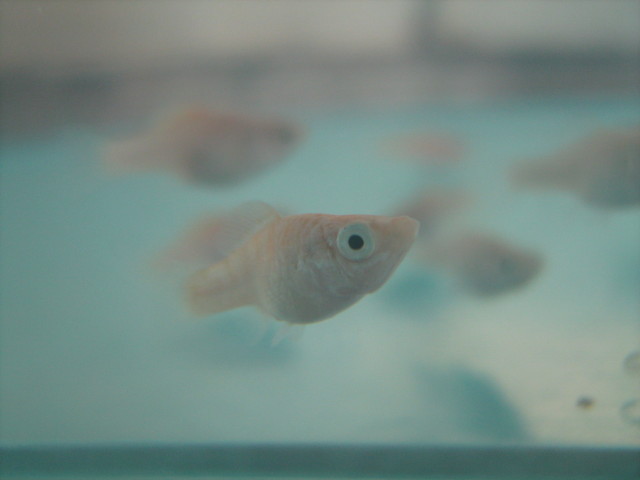 balloon molly fish
Questionmy baby balloon mollys
QUESTION: hi, i a
balloon molly fish
Questionmy baby balloon mollys
QUESTION: hi, i a
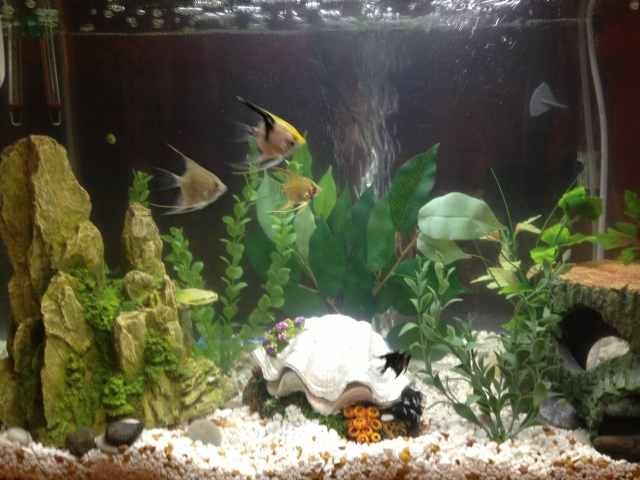 PLEASE HELP! Trouble in both my tanks!
QuestionMy angelfish tank
Bruise under coy angel
PLEASE HELP! Trouble in both my tanks!
QuestionMy angelfish tank
Bruise under coy angel
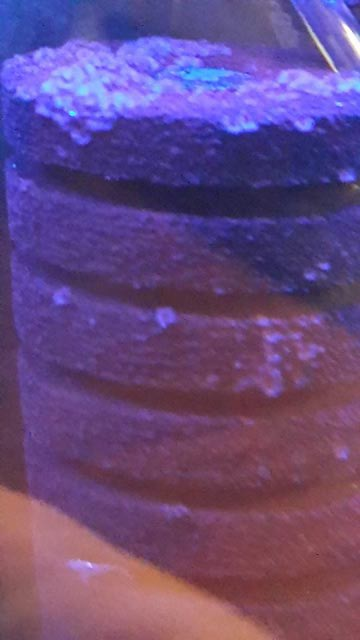 Pink fungus?
Question
pink fungus pink fungus
Hello,
I
Pink fungus?
Question
pink fungus pink fungus
Hello,
I
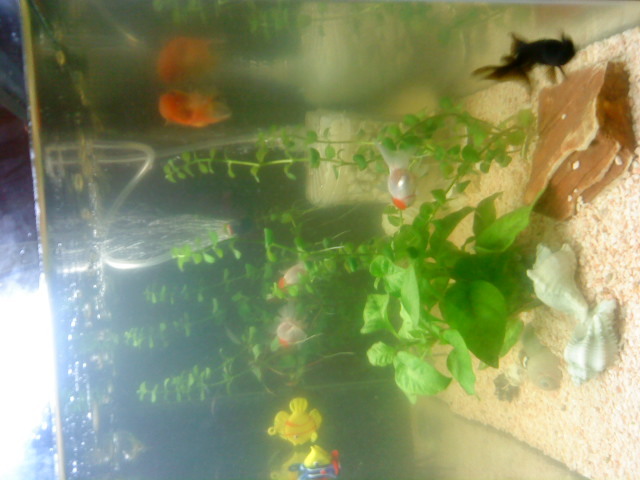 compatibility
Question
fish027
Hi Susan I have a 50litre tank
compatibility
Question
fish027
Hi Susan I have a 50litre tank
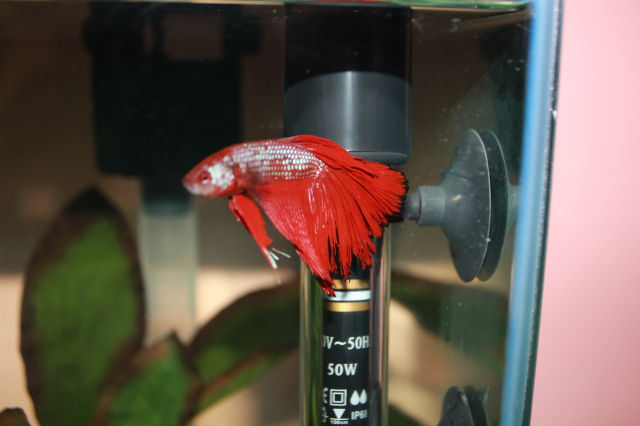 Betta fin problem?
Question
Fins
Hi Jaymie,
I contacted you a few
Betta fin problem?
Question
Fins
Hi Jaymie,
I contacted you a few